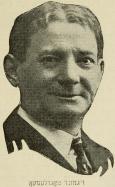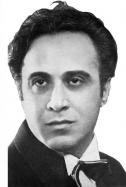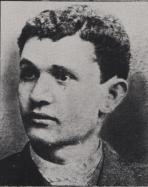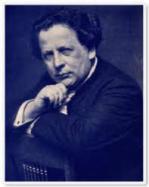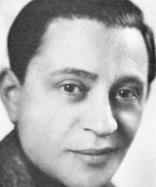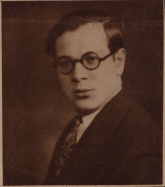(383 results found)
Leon Lishner
… Leon Lishner sings 'Tachanka': Leon Lishner sing Five Yiddish Songs: … American operatic bass-baritone … 0 … Opera … American … Russian jewry … Yiddish songs … Leon Lishner …
Henech Kon
… scores, recordings, and more. ' Play Me a Song ' In Yiddish by Henekh Kon, words by Y. Kotliar: *(The … Poland … Polish composers … Polish Jewry … Theater music … Yiddish songs … Henech Kon …
Sigmund Mogulesko
… which later became one of the most popular roles in Yiddish theater. In 1880 Mogulesko formed a theater troupe … New York in 1886, where he promptly became one of the first Yiddish theater stars. He sang in Offenbach 's Bluebeard , … wife, and three children. … Singer, actor & composer in the Yiddish theater … Composers … 0 … Yiddish … Singer … Actor … …
Herman Yablokoff
… here . For additional recordings (including biography) at Yiddish Music, click here . … Yiddish songwriter, lyricist, actor, playwright, director & producer … Songwriter … Yiddish … Playwright … Actor … Lyricist … Director … …

Sigmund Feinman
… Full biography at the Museum of family history website. … Yiddish actor & vocalist … Sigmund Feinman …
David Meyerowitz
… Full biography in Milken Archive. … Yiddish songwriter & Composer … David Meyerowitz …
Leon Blank
… choir. Even from an early age, Blank felt an attraction to Yiddish theater. When the opportunity to travel to the … York. Blank also toured the U.S, performing extensively in Yiddish theaters across the country. On several occasions, … and Hollywood films, but Blank preferred to remain on the Yiddish theater stage. Blank’s recording career included …
Platon Brounoff
… Conductor, arranger, and composer of Yiddish music. Born in Yelisavetgrad in Russia. In 1891, … songs, some of which he arranged for his choir. Composed Yiddish songs (see 'Song of the month,' March 2010 ). … and Culture . … Conductor, arranger, and composer of Yiddish music … Platon Brounoff …
Alexander Olshanetsky
… He stayed in Kharbin (today in China), and conducted a Yiddish theater group there. In 1922, Olshanetsky immigrated … to the U.S. and worked as a composer and conductor for the Yiddish theater. From 1925 and until his death, Olshanetsky … his tune Mazel in Liebe, 1929. … Composer & conductor of Yiddish theater music … Composers … Composer … Conductor … …
Abraham Ellstein
… was active on the radio and broadcasted programs about Yiddish music and Synagogue music. As a composer, he wrote 33 scores for Yiddish musical theater, over 500 Yiddish songs, and some scores for Yiddish films. In 1957, …





